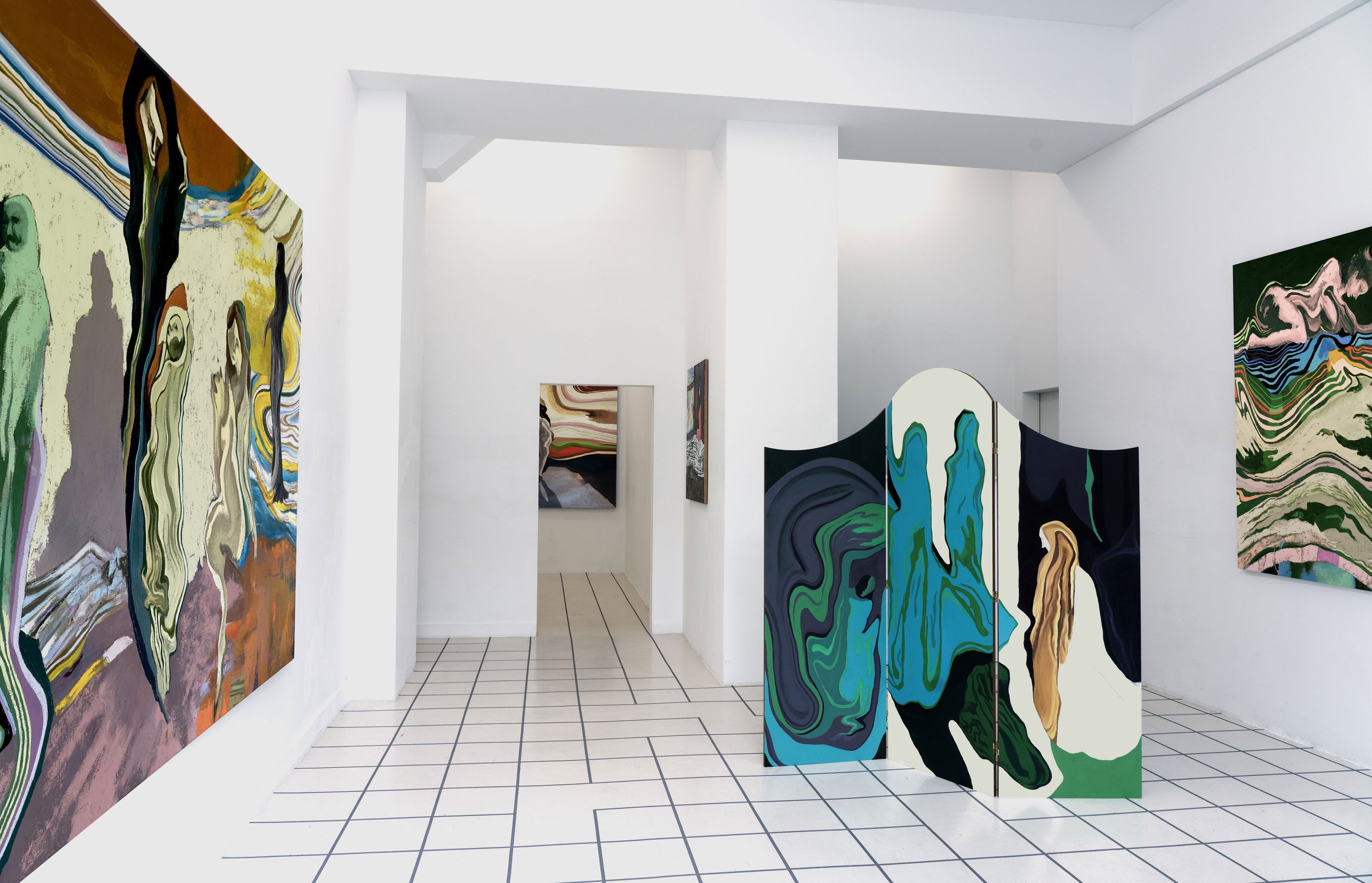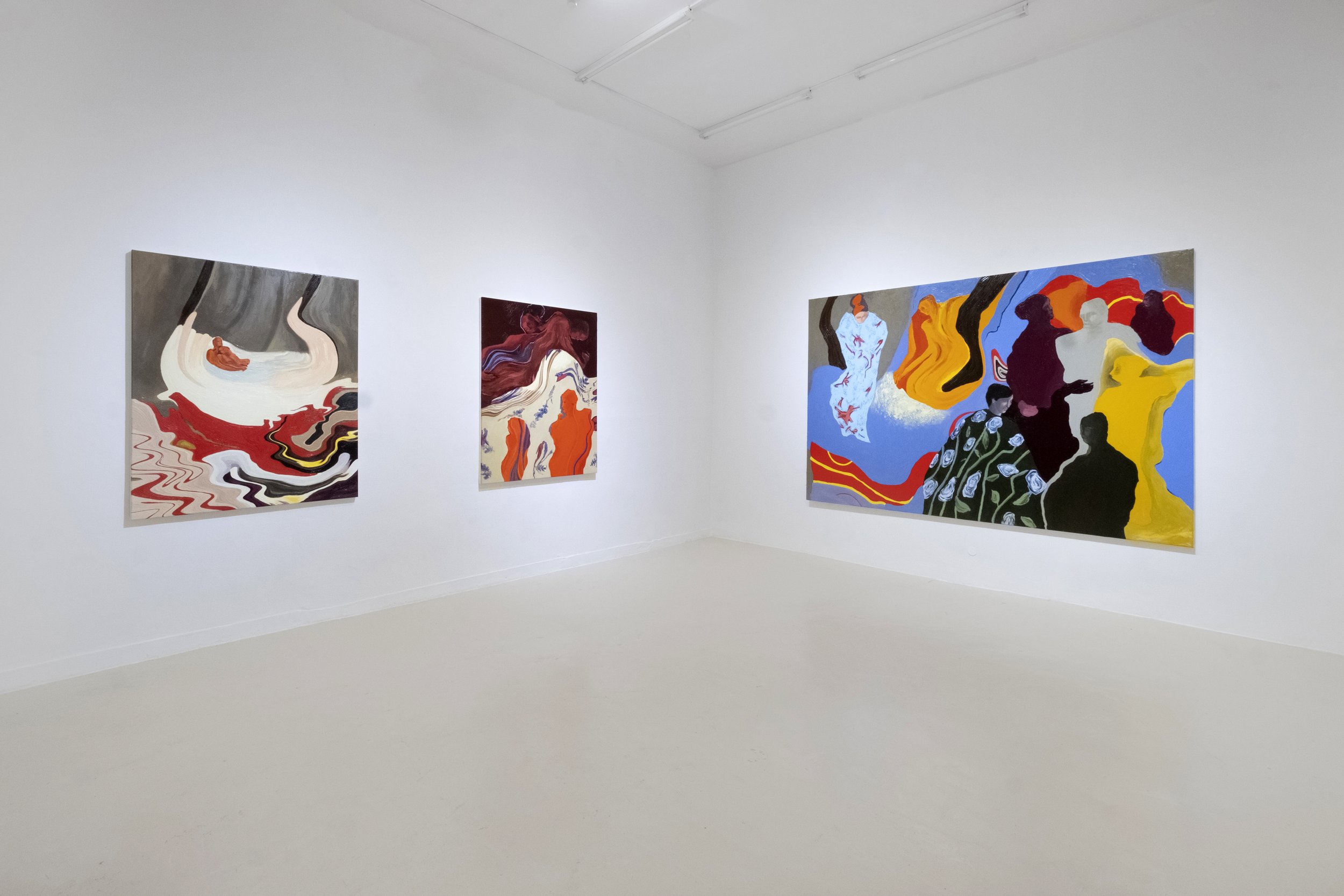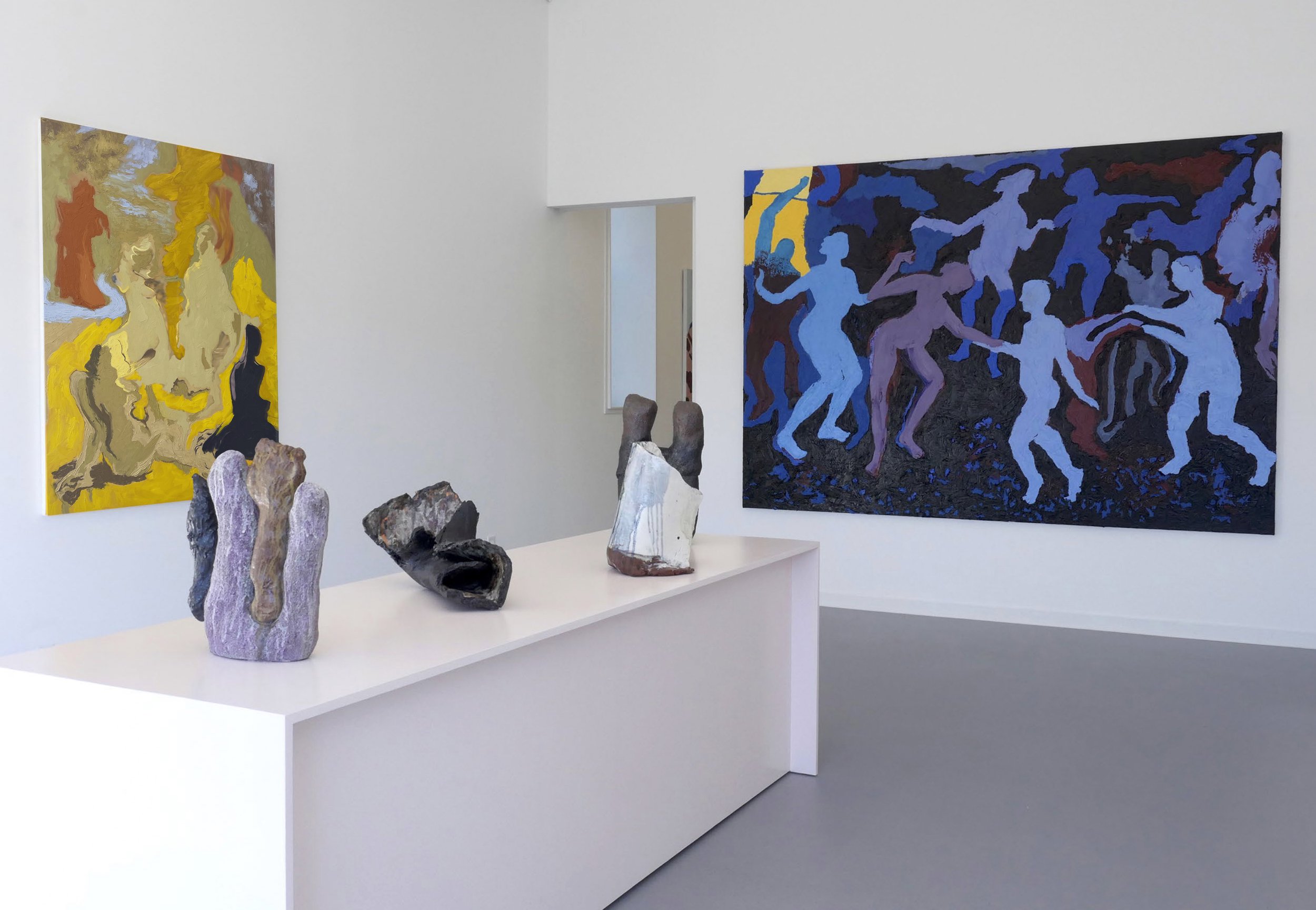There is one day — at times it gets dark LETO Gallery, Warsaw, Poland May 16 – July 5, 2025) Info here
Installation view There is one day — at times it gets dark
Installation view There is one day — at times it gets dark
There is one day, at times it gets dark, 2025 Oil on linen, 250 x 370 cm (diptych)
Soul Flowers (After Schiele), 2025 Oil on linen 145 x 120 cm
Hungry Ghosts, 2025 Oil on linen 195 x 280 cm
The Generous Present, 2025 Oil on linen, 168 x 130cm
The Things I Buried, 2025 Oil on linen, 164 x 130 cm
There is one day — at times it gets dark
This is an exhibition about time. About the present, which is given to us with each passing moment, and from which we persistently try to escape. It is about
the suspended state between constantly reliving memories and anticipating what the future might bring. Between regret or nostalgia for what has already passed, and dreaming of what is yet to come.
This is a story about longing. About the constant lack that consumes us from the inside and turns us into hungry ghosts. Spirits that wander around the world and try to fill their inner emptiness with belonging and a sense of acceptance. About the search for purpose, something that can nourish us and give our lives meaning.
This is a note about a journey. A voyage into the unknown, carrying with us the full baggage of experience, emotions, and shame. About how we bury these things along the way, only to rediscover them one day and carry them as an essential part of our identity.
This is a story about presence. About the ecstatic simplicity of being right here, right now. About the magic of everyday life, perfectly encapsulated in the overused cliche of “be here now." About the full spectrum of tones and sensations that so easily slip past our awareness.
These are paintings about energy. About the constant exchange of emotions and the emanation of feelings, taking visual form in undulating colors and vibrating stains. About energy that takes on a human face.
Text: Sebastian Gawłowski
献给马尔多罗之歌的礼物 (The Gift For Les Chants de Maldoror) Yudian Gallery, Hangzhou, China, 2024. Curator; Song Xiaoyu
Malować film (Painting Film) Fundacja Plurabelle, Warsaw, Poland, 2024
Enter Art Fair EXO Gallery, Copenhagen, Denmark, 2024
4 ROOMS Vol.2 LETO Gallery, Warsaw, Poland, 2023
Install view, LETO Gallery, Photo credit; Bartosz Górka
Install view, LETO Gallery, Photo credit; Bartosz Górka
Densely painted oil paintings by Maria Kozak balance the representation of the body and the streak of gesture dissolving towards abstraction. It is a world where human figures emanate feelings. Fleshy impastos of paint applied with a spatula spill into quivering and vibrating patches of oily colors.
These are stories about the fleshy shades of intimacy, bright moods, and the warm color of passion. They intersect with stories about hazy bluish remoteness, the cold darkness of relationships, and a miasma of shadowy loneliness. Spaces of harmony and anguish of the spirit are equal heroes of this looping plot.
The Loveboat and Perfect Strangers are stories about the nature of relationships that constantly drift between waves of integration and autonomy. Turbulent abysses of emotions precede windless moments of calm. A constant procession of close-ups in which desire turns into intimacy. But also eternally unexplored layers of mutual strangeness, in which "two loneliness border each other, protecting and greeting each other."
The work Social Animals tells the story of societal clashes between the community and predatory individualism. The Seeker tries to find himself in hermitic seclusion, searching for the relationship between the external and spiritual worlds. However, the quest for answers never ends, like in The Mortal Coil, where we constantly go around a vicious circle, shedding successive layers of masks and no longer fitting skin that grows over us.
— Sebastian Gawlowski
EXPO Chicago Dreamsong, Minneapolis, MN, 2023
Dissolving Margins Dreamsong, Minneapolis, MN, 2022
Dreamsong is pleased to announce Dissolving Margins, a two-person exhibition featuring sculpture by Julia Haft- Candell and recent paintings by Maria Kozak. The exhibition title references an Italian term central to Elena Ferrante’s Neapolitan Novels ‘smarginatura,’ translated as ‘dissolving margins’ by Ann Goldstein, and described as “the sensation of moving a few fractions of a second into a person or a thing or a number of a syllable, violating its edges.”
Drawing inspiration from the occult and esoteric orders, Kozak began her recent paintings with digital sketches, intuitively manipulating two color fields until desirable forms emerge. The central subject of this body of work are the cyclical, irresolvable interactions that emerge from the classic dichotomies of the human condition, such as physical/ spiritual, control/surrender or stillness/movement. Kozak
is interested in the “The idea of eternal return, that the universe and all existence and energy has been recurring, and will continue to recur an infinite number of times across infinite time or space.”
Like Kozak, Haft-Candell is materially and conceptually interested in liminal space and the subversive interaction
of dichotomies. Also beginning with intuitive gestures, Haft- Candell models clay objects into a growing lexicon of forms she has spent years developing. In 2017, the artist published the infinite, a glossary of terms and symbols that articulates the multiple meanings undergirding these forms and provides insight into their personal, social and psychological origins. The infinite often highlights the way in which opposed symbols are paradoxically connected, such as ‘The Torus’, which the artist describes as “The ring or donut shape, associated with female... While perhaps seen as oppositional to the Dash in the linear world, in the Infinite, the two must coexist.”
Dissolving Margins highlights conceptual and formal reverberations between Kozak and Haft-Candell’s distinct practices. In particular, both artists undermine hard binaries by imagining hybrid forms. Kozak, working in oil paint, and Haft-Candell in ceramic, upend the delineation of stable categories through embracing ambiguity and porous borders. In sensuous oil paintings and ceramic sculptures that that trace the body while gesturing towards abstraction, forms seep, bleed and interlock through the alchemy of touch.
— Rebecca Heidenberg
























